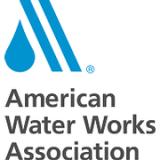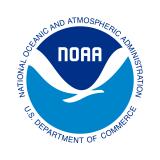NIDIS-hosted Technical Session at American Water Works Association (AWWA)’s 2019 Sustainable Water Management Conference
 Drought can have a significant impact on the management and operations of water utilities, from loss of water supply and poor source water quality to increased demand from customers and reduced revenues. Changing conditions in precipitation, snowpack, soil moisture, temperature, and evapotranspiration must be well monitored and better forecasted to provide water managers early warning of drought. Water managers facing water shortages need access to new technologies, tools, and resources to better understand and reduce drought risk to their water supply systems.
Drought can have a significant impact on the management and operations of water utilities, from loss of water supply and poor source water quality to increased demand from customers and reduced revenues. Changing conditions in precipitation, snowpack, soil moisture, temperature, and evapotranspiration must be well monitored and better forecasted to provide water managers early warning of drought. Water managers facing water shortages need access to new technologies, tools, and resources to better understand and reduce drought risk to their water supply systems.
For the second year in a row, NIDIS served as a technical content partner for the American Water Works Association’s Sustainable Water Management Conference, to bring the technical expertise of NIDIS and our partners to the forefront of America’s water and wastewater utilities sector. The conference brought together water sector organizations and professionals to discuss all aspects of resilient and efficient water management. Sessions at the 2019 conference provided insights on water conservation programs, resilience and project sustainability, source water supply and protection, and long-range resource management and planning. On April 3, NIDIS hosted a technical session, “Innovation Across the Water Cycle: New Tools and Technologies to Manage Drought Risk,” featuring the work of NIDIS and several partners in developing tools and resources that help water utilities address their drought risk:
- The National Integrated Drought Information System (NIDIS): Reauthorization and 2019 Updates - Elizabeth Ossowski, CIRES/NIDIS
- Climate Engine: On-Demand Cloud Computing and Visualization of Climate and Remote Sensing Data - Dr. Dan McEvoy, Desert Research Institute
- Drought Monitoring and NOAA’s National Water Model - Mimi Hughes, NOAA/Earth System Research Laboratory/Physical Sciences Division
- Water Utility Climate Alliance: Building Resilience to a Changing Climate - Ivana Kajtezovic, Tampa Bay Water, on behalf of Water Utility Climate Alliance
 NIDIS Program Coordinator Elizabeth Ossowski opened the session by providing participants with an update on the NIDIS Program and highlighted various tools, drought information, and resources available to water managers through the Drought Portal and other NIDIS initiatives.
NIDIS Program Coordinator Elizabeth Ossowski opened the session by providing participants with an update on the NIDIS Program and highlighted various tools, drought information, and resources available to water managers through the Drought Portal and other NIDIS initiatives.
Dr. Dan McEvoy, Assistant Research Professor, Climatology, at the Desert Research Institute and Regional Climatologist with the Western Regional Climate Center, presented on Climate Engine, a web application powered by Google Earth Engine that can be used to monitor weather and vegetation using on-demand cloud processing of remote sensing and gridded climate archives.
Dr. Mimi Hughes, Researcher at NOAA’s Earth System Research Laboratory, Physical Sciences Division, in collaboration with partners in NOAA’s Office of Water Prediction and Climate Prediction Center, presented on the development of prototype products for drought-monitoring purposes using NOAA’s state-of-the-art National Water Model. The National Water Model offers many variables relevant to drought monitoring, including soil moisture at several depths and streamflow, and it does so on an unprecedentedly high-resolution grid of 250 m to 1 km. Streamflow is an indicator of hydrological drought, with low flows indicating potential fresh-water shortages. This project uses NIDIS-funded, in-ground soil moisture measurements to evaluate the National Water Model’s soil moisture data and, with regular input from stakeholders at the National Drought Mitigation Center (operators of the US Drought Monitor), is developing new methods to visualize soil moisture and streamflow anomalies that will provide new insight for Drought Monitor authors.
Ivana Kajtezovic of Tampa Bay Water presented on behalf of the Water Utility Climate Alliance (WUCA), providing insights into Tampa Bay Water’s Water Shortage Mitigation Plan and local efforts to prepare for drought. WUCA offers trainings on “Building Resilience to a Changing Climate,” attended by drinking water and wastewater utility managers and consultants from across the U.S, and its next training will be held in Tampa in May 2019. At WUCA trainings, attendees learn different methods for incorporating climate change information into water resource planning, planning for multiple scenarios, and developing communication strategies to convey concepts to different audiences.
All conference materials and information can be found here. For more details, please contact: Elizabeth Ossowski (elizabeth.ossowski@noaa.gov)








